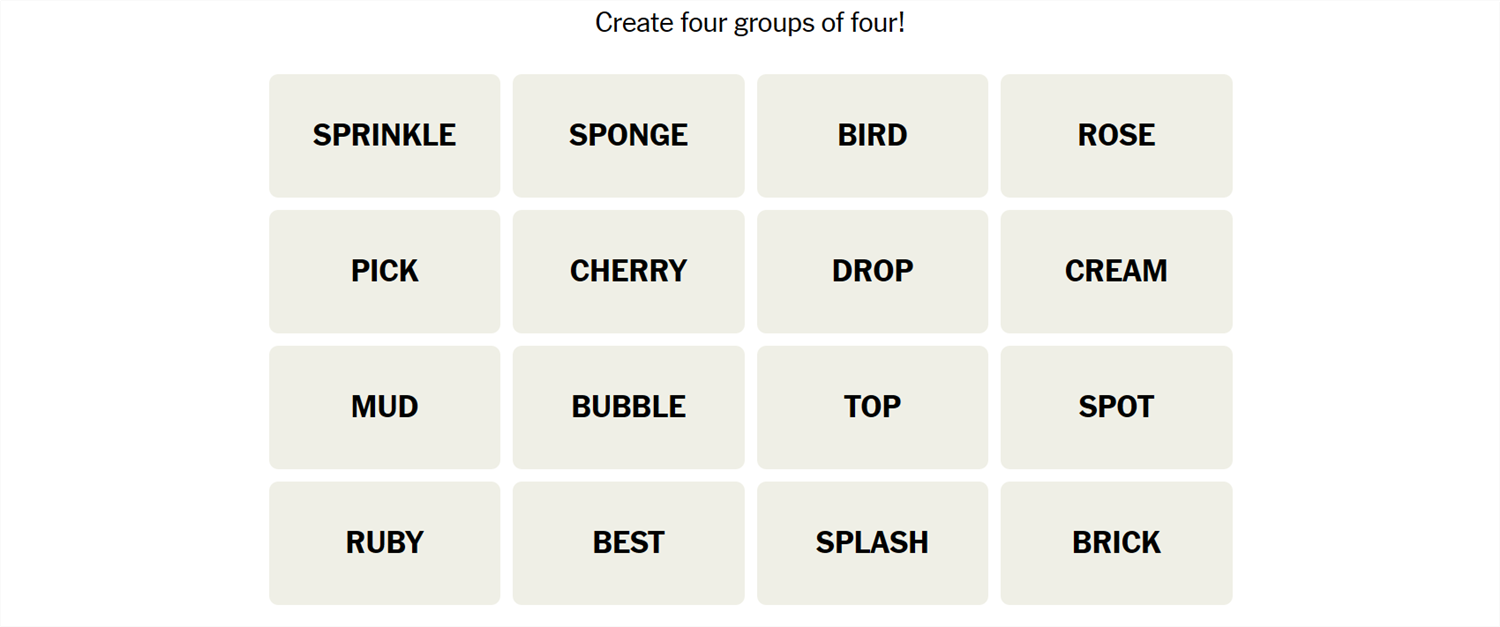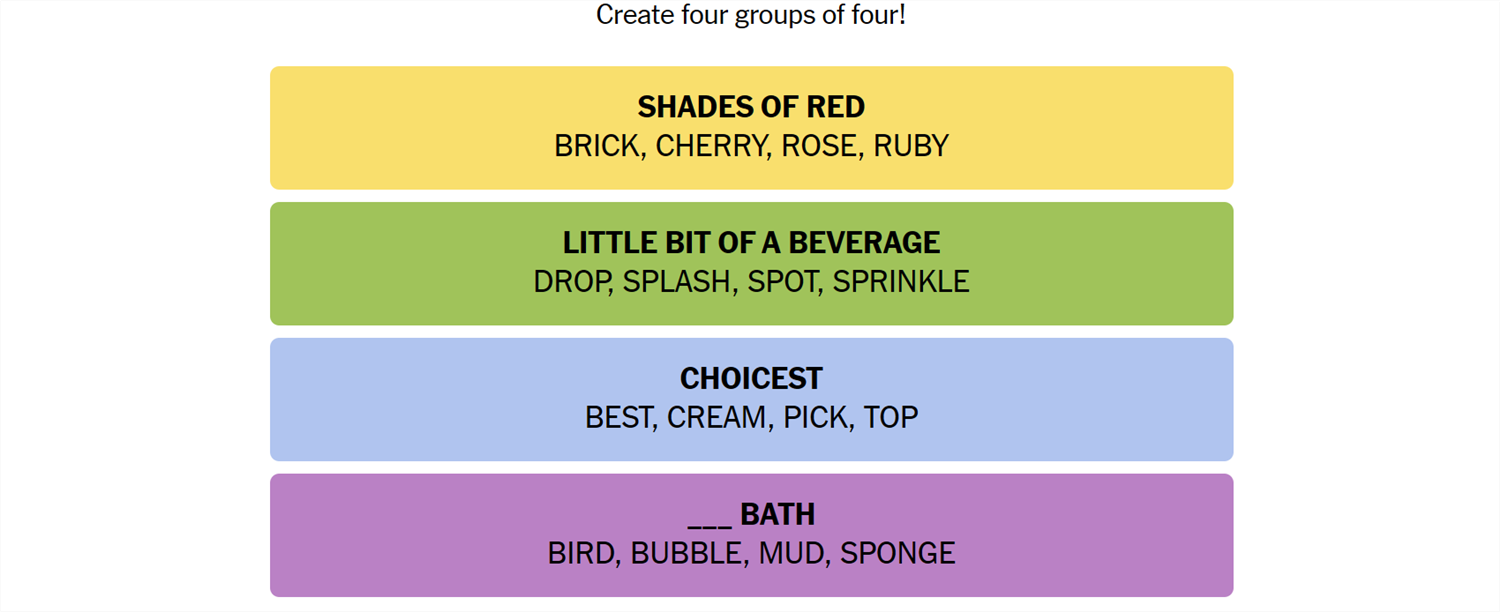Connections is a game from the New York Times that challenges you to find the association between words. It sounds easy, but it isn’t—Connections categories can be almost anything, and they’re usually quite specific. If you need a hand getting the answers, we’ve got you covered.
What Is Connections?
Connections is a game from the New York Times. The objective is simple: sort 16 words into groups of 4. Each group of words will be connected by some common idea or theme. That common element could be anything. We have seen everything from games that rely on the number of letters in the words to categories that require you to spot an extra letter at the end of the word. Sometimes they’re references to economics, other times they reference fairy tales. There is no telling what sort of association there will be between words.
Once you’re confident you understand the connection, select 4 words, then hit “Submit.” You have only four attempts in total, so don’t be too guess-happy.
Hints for Today’s Connections Groups
Here are a few hints for the 332nd Connections game to get you started:
- Yellow: Scarlett.
- Green: A tiny amount.
- Blue: The nicest option available.
- Purple: Not a shower, but similar.
What Are Today’s Connections Groups?
If you still need help, the actual group names are:
- Yellow: Shades of Red
- Green: Little Bit of a Beverage
- Blue: Choicest
- Purple: ___ Bath
Today’s NYT Connections Answers
Shades of Red (Yellow):
Brick, Cherry, Rose, Ruby
Little Bit of a Beverage (Green):
Drop, Splash, Spot, Sprinkle
Choicest (Blue):
Best, Cream, Pick, Top
Round of ____ (Purple):
Bird, Bubble, Mud, Sponge
How Did We Solve This Connections Game?
May 8th was a bit harder than usual, but not terrible.
Brick, cherry, rose, and ruby all stood out immediately because they’re all typically red. That seemed like a strong enough connection to risk a guess, and it paid off. Yellow was “Shades of Red.”
The next word I latched on to was best. Top seemed like a reasonable word to go with it, but the others were a bit more difficult to pick out. What context were best and top being used in? The best option? The best or top choice? Pick seems vaguely related ot these ideas, as in “my first pick,” so I threw that one in too. Eventually, the idiom “cream of the crop,” which means “the best in the group,” led me to add that as my fourth word. Together, best, cream, pick, and top were “Choicest,” the Blue group. That one felt rougher than Blue usually is.
Drop, splash, spot, and sprinkle were a bit more obvious with some confounding words out of the way. They can all sometimes mean “a little bit of something,” typically a liquid, though sprinkle is probably more commonly used to describe solid food or seasonings. The Green group was actually titled “Little Bit of a Beverage.”
That left bird, bubble, mud, and sponge. I was thoroughly stumped by these until they were the only words left, but saying them aloud make it click instantly. They’re all words that can go before the word bath. Purple was “____ Bath.”
How Do You Guess Connections Groups?
There is no quick, reliable way to approach Connections like there is with Wordle, since Connections isn’t algorithmic. However, there are a few things to keep in mind that can help.
- Look for similar parts of speech. Are some words verbs and others nouns? Are some adjectives? Try mentally grouping them based on those categories and see if any other patterns jump out at you.
- Are the words synonyms? Sometimes categories will just be synonyms for a phrase, or very close to synonyms. Don’t rely too closely on this, though. Occasionally, Connections will deliberately throw in words that are sometimes synonyms to mislead you.
- Try saying the words. Sometimes, saying the words helps. One puzzle we saw included the words go, rate, faster, clip, pace, speed, move, commute, and hurry—all of which are obviously related to the idea of motion. However, when you say them, it becomes a little more obvious that only four (go, move, hurry, faster) are things you’d actually say to prompt someone to get moving.
- Expect the red herring. Connections usually has words that could be plausibly, yet incorrectly, grouped together. Take the words Bud, Corona, and Light, as an example. You might instinctively see those three words together and assume they’re lumped together in a category related to beer—but they weren’t.
- Look for distinct words. If a word on your board doesn’t have multiple meanings or can really only be used in one context, try using that word as the basis for a category.
- Shuffle the board. Sometimes, moving words around will help you look at them in new ways.
If you didn’t solve this one, don’t feel too bad—there’s always tomorrow! And those words may align with a topic you’re interested in, giving you a leg up on the competition.






